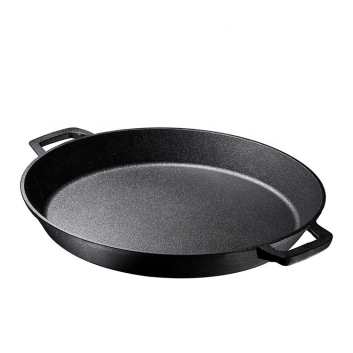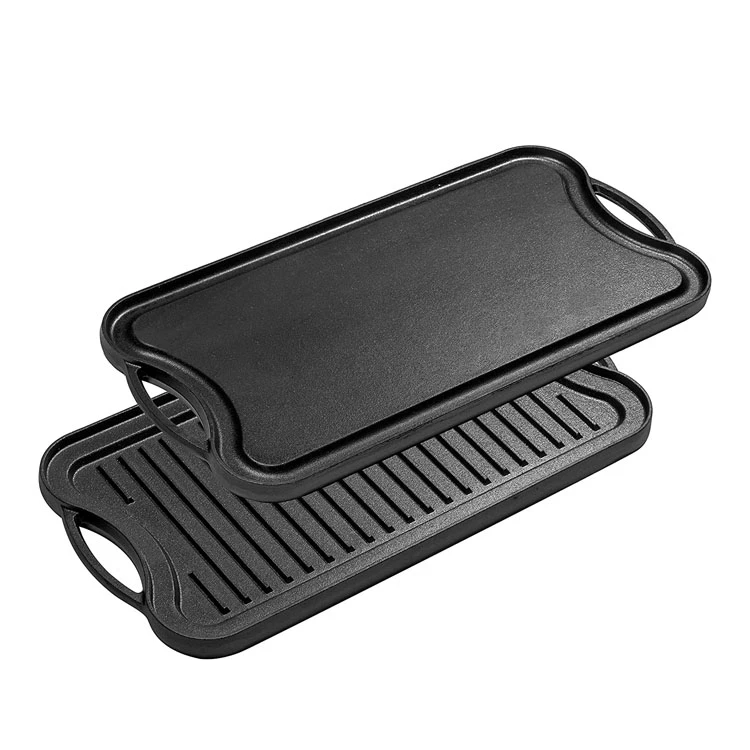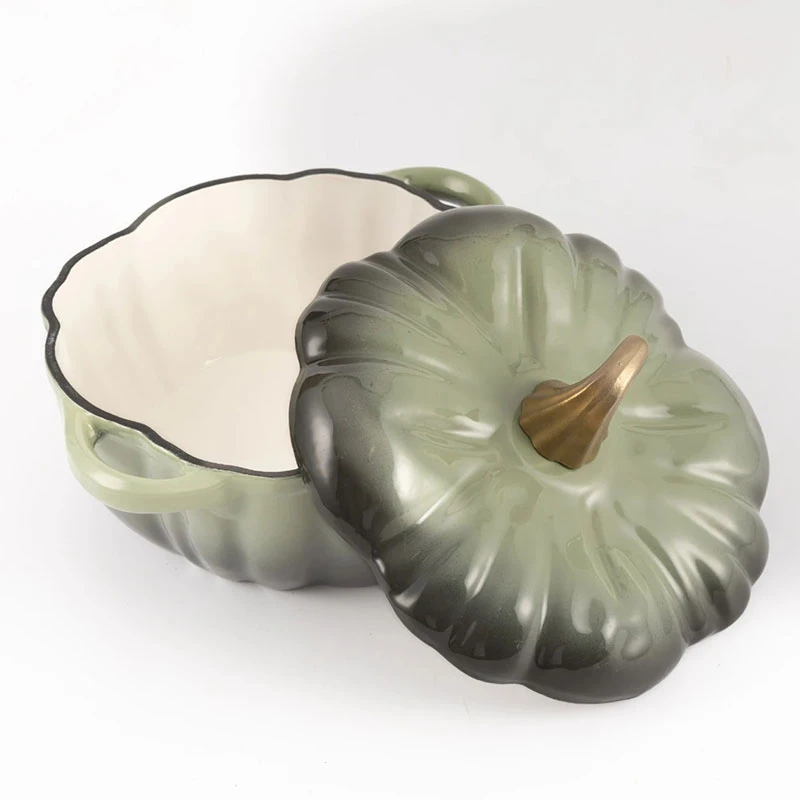
Preheating Your Iron Pizza Pan Correctly
A perfectly preheated iron pizza pan is the secret to achieving that crispy, restaurant-quality crust at home or in commercial kitchens. The right preheating technique ensures the pan reaches optimal temperatures, allowing the dough to cook quickly, develop a golden edge, and hold toppings without turning soggy. Zhongdacook, a leading cast iron cookware manufacturer since 1993 under Baixiang County Zhongda Machinery Manufacturing Co., Ltd., crafts exceptional cast iron deep pan and cast iron pizza skillet models, trusted by wholesalers serving pizzerias, home cooks, and culinary professionals. Their commitment to quality ensures these pans retain heat evenly—making proper preheating even more impactful. This article explores the essential steps to preheating iron pizza pan variants, helping wholesalers guide their clients toward perfect pizza results.

Optimal Temperature for Iron Pizza Pan Preheating
- High Heat for Crispy Crusts: A iron pizza pan needs to reach 475–500°F (245–260°C) for optimal results. This high temperature mimics the intense heat of a wood-fired oven, searing the dough instantly to create a crispy bottom while allowing the toppings to cook through without overdone edges. Wholesalers should highlight that cast iron’s ability to hold high heat makes it ideal for this—clients will notice the difference in crust quality.
- Adjusting for Pan Type: A cast iron deep pan (used for thick, Chicago-style pizzas) benefits from slightly lower preheating (450–475°F) to ensure the thicker dough cooks through without burning the bottom. In contrast, a cast iron pizza skillet (shallow and wide) thrives at 500°F, perfect for thin-crust pies that need quick, even heat. This distinction helps wholesalers tailor advice to clients with diverse menu needs.
- Oven vs. Stovetop Preheating: While ovens are the most common preheating method, stovetop preheating works for iron pizza pan models used on gas or induction ranges. Stovetop preheating allows for faster temperature rise but requires careful monitoring to avoid hot spots—ideal for small pizzerias or home cooks with high-powered stoves.
Timing and Methods for Cast Iron Deep Pan Preheating
- Preheating Duration: A cast iron deep pan requires 30–45 minutes in a preheated oven to reach full temperature. This longer time ensures the thick, deep walls heat evenly, preventing cold spots that could lead to undercooked dough. Wholesalers can emphasize that patience here pays off—rushing preheating is a common mistake that ruins pizza texture.
- Using a Pizza Stone Underneath: Placing a pizza stone on the oven rack below the cast iron deep pan helps distribute heat more evenly, especially in ovens with uneven heating. The stone absorbs and radiates heat, supplementing the pan’s own heat retention for consistent cooking— a pro tip that adds value for clients seeking professional results.
- Step-by-Step Stovetop Method: For stovetop preheating, place the iron pizza pan on medium-high heat and let it warm for 8–10 minutes, rotating occasionally. Test the temperature by sprinkling water on the surface—if it sizzles instantly, the pan is ready. This method is popular with food trucks or outdoor kitchens, making it a useful selling point for wholesalers targeting mobile food businesses.
Common Preheating Mistakes to Avoid with Cast Iron Pizza Skillet
|
Mistake |
Impact on Cast Iron Pizza Skillet |
Solution |
|
Preheating Too Quickly |
Causes uneven heat distribution, leading to burnt spots and undercooked areas. |
Allow the cast iron pizza skillet to heat gradually, increasing oven temperature in 50°F increments if needed. |
|
Skipping Oil Seasoning |
Dough sticks to the pan, ruining crust texture. |
Lightly oil the skillet during preheating (once hot) to create a non-stick barrier, enhancing both release and flavor. |
|
Opening the Oven Frequently |
Drops oven temperature, extending preheating time and reducing pan heat. |
Resist checking the pan until preheating is complete—use an oven thermometer to monitor temperature without opening the door. |
|
Using High Heat for Too Long |
Burns the pan’s seasoning, creating a bitter taste and damaging non-stick properties. |
Set a timer to avoid over-preheating; iron pizza pan models maintain heat well, so extra time isn’t needed. |
This table helps wholesalers educate clients on avoiding pitfalls, ensuring their cast iron pizza skillet performs at its best.
Benefits of Proper Preheating for Iron Pizza Pan
- Enhanced Crust Texture: A well-preheated iron pizza pan creates a crispy, charred bottom with a chewy interior—exactly what customers crave. The instant heat sears the dough, locking in moisture and preventing sogginess from tomato sauce or toppings. This texture upgrade is a key selling point for pizzerias looking to stand out.
- Efficient Cooking Time: Properly preheated pans reduce overall baking time by 10–15 minutes, a boon for busy commercial kitchens. A cast iron deep pan that’s fully heated cooks thick dough in 20–25 minutes instead of 30+, improving kitchen throughput— a metric wholesalers can tie to client profitability.
- Better Topping Integration: When the pan is hot, toppings cook simultaneously with the dough, ensuring cheese melts evenly and vegetables soften without making the crust wet. This harmony of textures is hard to achieve with underheated pans, making proper preheating a mark of quality for client menus.
Iron Pizza Pan FAQS
Can I Preheat a Cast Iron Pizza Skillet in a Grill?
Yes! A cast iron pizza skillet works excellently on gas or charcoal grills. Preheat the skillet on the grill for 15–20 minutes with the lid closed, aiming for 475–500°F. This method imparts a smoky flavor, appealing to clients offering artisanal or outdoor-cooked pizzas— a unique selling point for wholesalers.
How Do I Know When My Cast Iron Deep Pan Is Properly Preheated?
A cast iron deep pan is ready when a small piece of dough placed on the surface puffs up within 30 seconds. Alternatively, an infrared thermometer (a useful accessory) will read 450–475°F. Wholesalers can recommend thermometers as add-ons to help clients perfect preheating.
Will Preheating an Iron Pizza Pan Damage My Oven?
No, as long as the oven is clean and in good working order. Most home and commercial ovens handle 500°F easily, which is well within their capacity. The iron pizza pan’s even heat distribution actually protects ovens by reducing hot spot strain— a reassuring point for cautious clients.
Is It Necessary to Preheat a Cast Iron Pizza Skillet for Frozen Pizzas?
Absolutely! Even frozen pizzas benefit from a preheated cast iron pizza skillet. The hot pan thaws the crust quickly, creating a crispy base instead of the soggy texture that results from cooking on a cold surface. This makes the skillet a versatile tool for clients serving both fresh and frozen options.
Where Can Wholesalers Source High-Quality Iron Pizza Pan Models?
Zhongdacook, part of Baixiang County Zhongda Machinery Manufacturing Co., Ltd., offers durable iron pizza pan, cast iron deep pan, and cast iron pizza skillet options perfect for proper preheating. Visit their website to explore their range, ideal for supplying pizzerias, restaurants, and culinary retailers.
-
soups-to-make-in-a-pumpkin-dutch-ovenព័ត៌មានAug.23,2025
-
storing-your-cast-iron-camping-set-properlyព័ត៌មានAug.23,2025
-
Baking No-Knead Bread in a 5.5 Qt Dutch Ovenព័ត៌មានAug.22,2025
-
Essential Accessories for Your Cast Iron Camp Ovenព័ត៌មានAug.22,2025
-
Differences Between a Round and an Oval Dutch Ovenព័ត៌មានAug.22,2025


